The New York Times 7 Oct 5:45 PM (15 days ago)
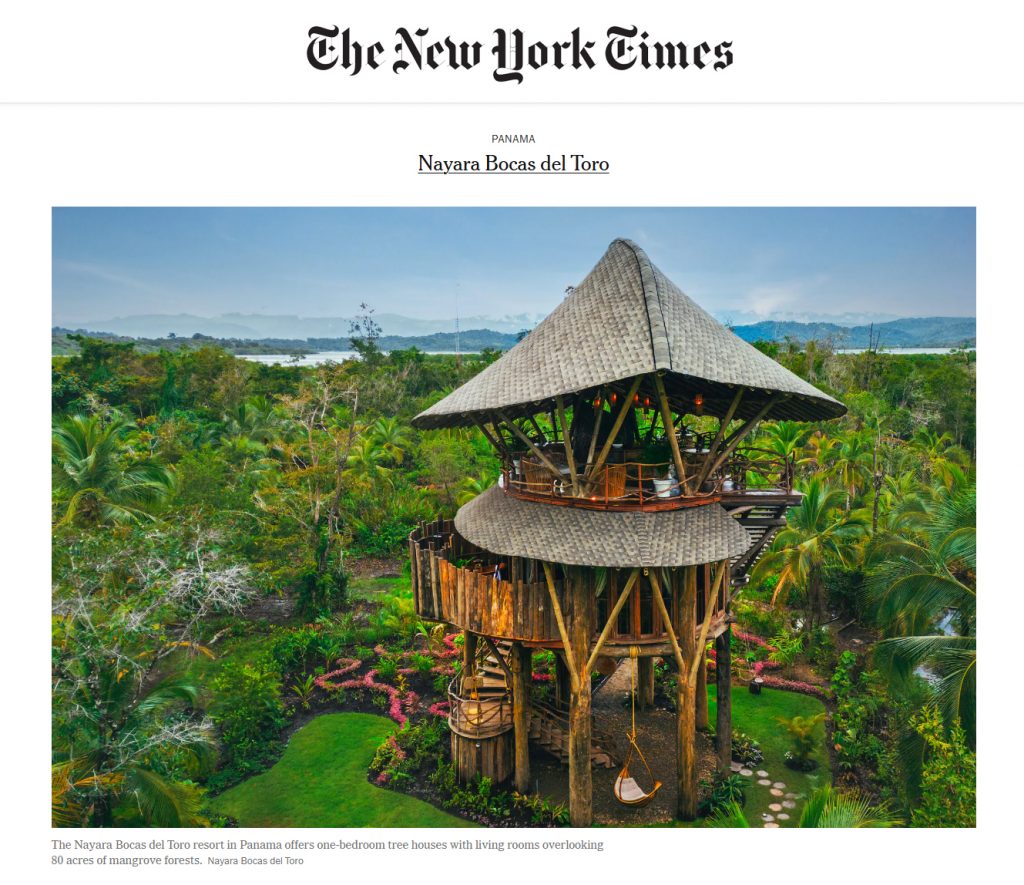
On Frangipani, a private island in Panama, sits the Nayara Bocas del Toro resort, with four solar-powered tree house accommodations designed by Ibuku, a Bali-based design studio led by Elora Hardy, the Canadian designer. The tree houses are made from locally grown bamboo and several varieties of reclaimed hardwoods.
Meandering resort paths covered in greenery lead to the tree houses and curving stairs that lead to a pivoting glass door. The one-bedroom tree houses feature Balinese furniture, open-air living rooms overlooking 80 acres of mangrove forests, 21-foot-tall ceilings, outdoor jungle showers and copper soaking tubs. In the treehouse, a pulley brings picnic-style meals to guests. A stand-alone “spa treehouse” is undergoing a soft opening and will make its formal debut in early 2026.
Treehouse rates start at $1,400 per night, all-inclusive.
Click here for complete article
The post The New York Times appeared first on IBUKU.
CLAD Magazine 2 Sep 4:42 PM (last month)





click here for complete article
The post CLAD Magazine appeared first on IBUKU.
BluPrint Homes Magazine 23 Jul 11:37 PM (3 months ago)
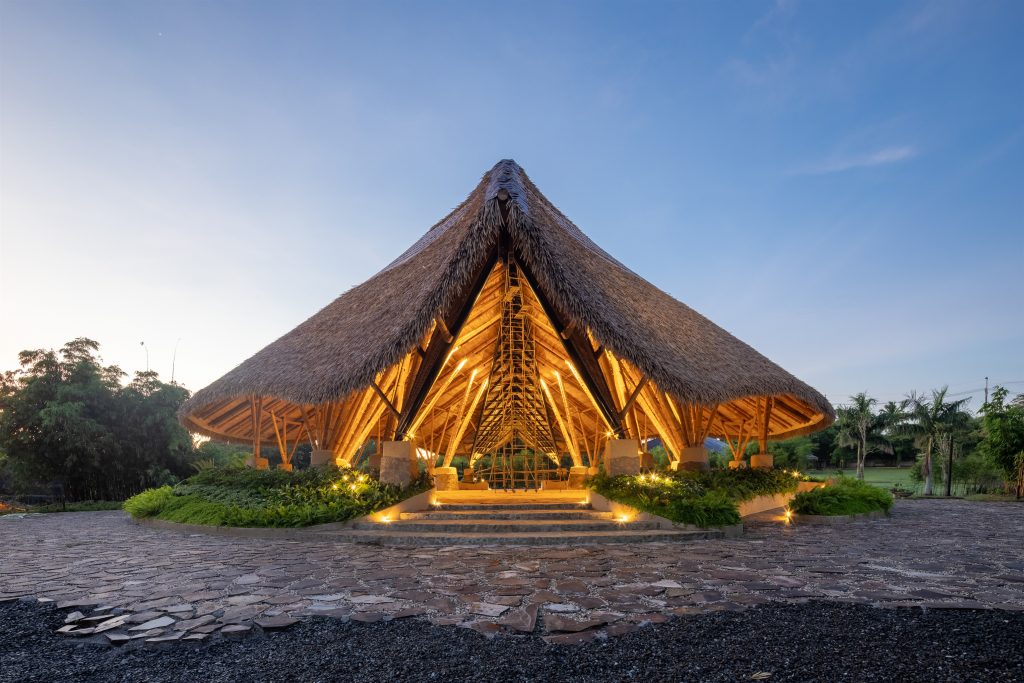
Architecture
How Kaway’an EcoPark is Redefining Bamboo Architecture
Citihomes Builder and Development Inc. brings together a landmark collaboration between Sangay Architects, Ibuku, and PT Bamboo Pure Bali.
Set within the city limits of the burgeoning General Trias, Cavite, Luzon’s largest bamboo structure graces the landscape. The Kawayan EcoPark Bamboo Pavilion speaks of local aspiration, international design expertise, and a profound connection to its Philippine setting.
Visually, the Pavilion is a captivating sight. Its immense, organically curved roof, layered with thick thatch accented with copper, seems to float above the landscape, supported by a forest of robust bamboo poles that fan upwards. The structure embraces openness, its expansive canopy offering shelter while inviting the surrounding greenery and natural light deep within, creating a space that feels both monumental and intimately connected to the earth.
Its story begins with the vision of Rosie Tsai , CEO of Citihomes Builder and Development Inc. Building upon then Mayor Antonio Ferrer’s suggestion to create an eco park, Tsai envisioned it as a beautiful, vibrant space that was entirely self-sustaining and delivered true community benefit. “I thought of bringing the community together with a venue that will foster not just interaction with people, but also with nature,” she explains.
Collaboration and Craftsmanship
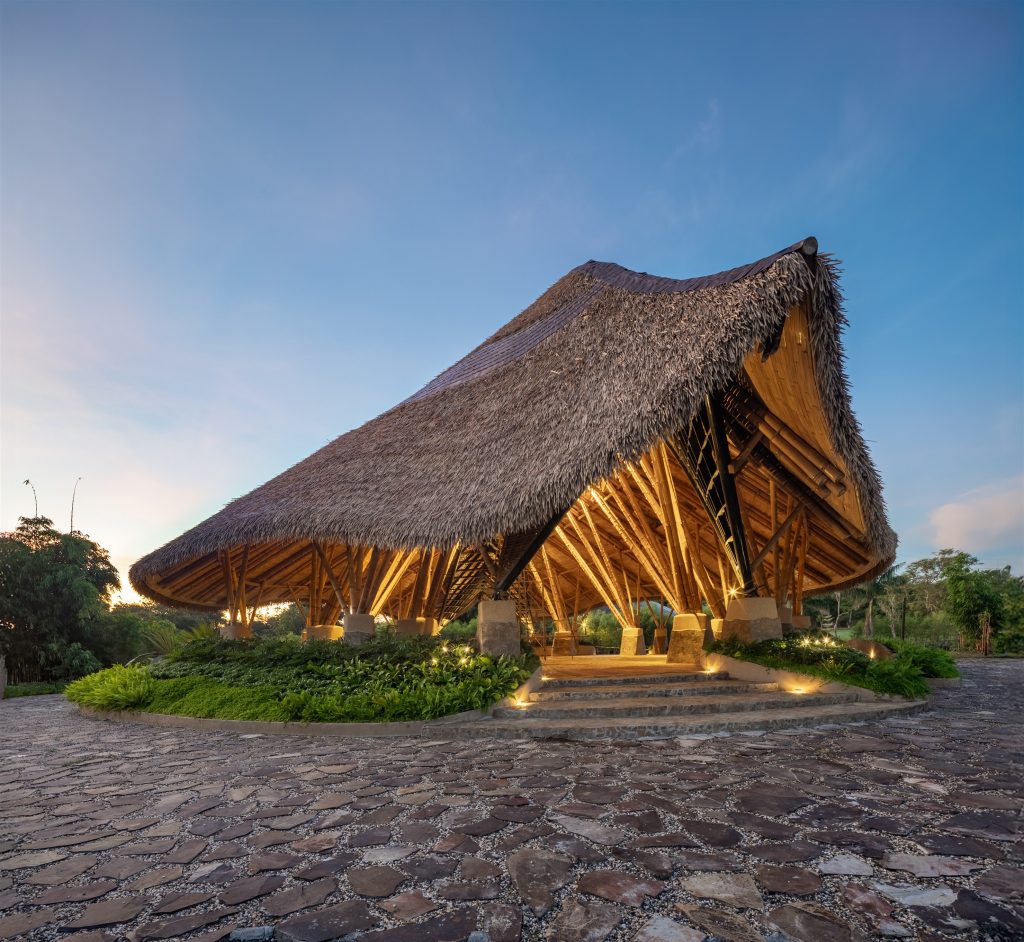
Designing such a landmark in the Philippines presented unique environmental considerations. This challenge was keenly felt by Christian Salandanan of Sangay Architects, the pioneering Filipino architect who collaborated closely on the project with Orin Hardy founder of PT Bamboo Pure Bali, and Elora Hardy of Ibuku, the globally acclaimed designer behind the Pavilion’s concept. For Salandanan, Hardy, and their teams, it sparked a deeper inquiry into the essence of contemporary Filipino bamboo architecture.
The Philippines presents a distinct challenge: structures must withstand wind speeds of up to 300 kph due to powerful typhoons. The ambitious scale and the climatic demands led the design team to an innovative yet pragmatic approach: a marriage of steel and bamboo. This was a conscious evolution for Ibuku, moving beyond purist bamboo applications to embrace what the site and vision required. “We decided not to hide it, not to conceal it, but to reveal it and celebrate it as part of the honesty of the building,” Hardy states.
Salandanan echoed this philosophy, emphasizing that for a permanent bamboo structure of this magnitude, combining materials was essential. By using steel as steel, and bamboo as bamboo, it allowed each to truthfully express its inherent strengths.
Cultivating a Sustainable Future
Hardy’s design philosophy always begins with people. She considers how they will use a space, how they should feel within it, and how it can connect them back to the natural world. This is evident in the Pavilion’s open, embracing form, deeply attuned to both human experience and its specific environment.
Salandanan also saw the collaboration as an opportunity to push the practice of bamboo architecture beyond preconceived notions and individual styles. He points to specific functional innovations born from this contextual awareness, such as the carefully engineered slits in the Pavilion’s soaring roofline, designed to allow the structure to “breathe” and reduce wind pressure during extreme weather events—an elegant solution to a powerful local force.
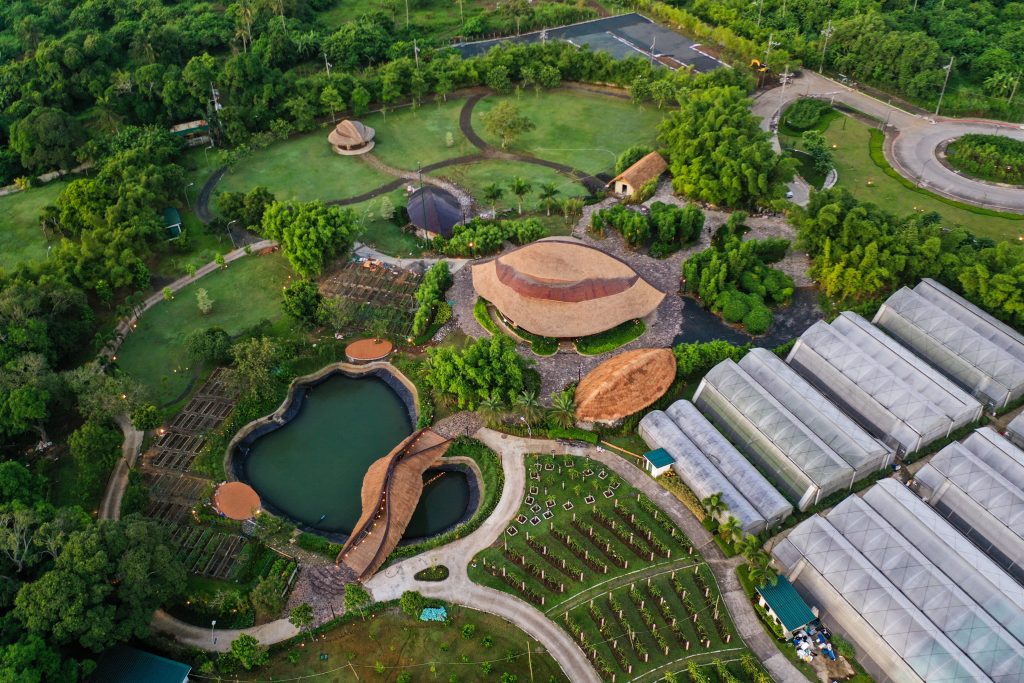
For Rosie Tsai, the Pavilion holds a significance that transcends its physical form; it’s about changing hearts and minds of Filipinos. “I love bamboo so much because of the spiritual meaning it lends to the human spirit,” she shares. “In the Philippines, bamboo has a reputation that it’s the poor man’s timber. We want to change that. Despite bamboo’s humble roots, if applied with patience and proper treatment, its intrinsic resilience can be transformed into an incredibly diverse and inspiring material.”
Her commitment extends to tangible action, with Citihomes now investing in bamboo treatment facilities and ensuring that local workers gain invaluable skills alongside the Balinese craftsmen during the Pavilion’s construction. Salandanan also hopes it will serve as a compelling precedent that showcases bamboo’s enormous potential. “We can use bamboo here in the Philippines with the right process, with the right design, and with the right acceptance of the material. We want to set an example that bamboo is not temporary.”
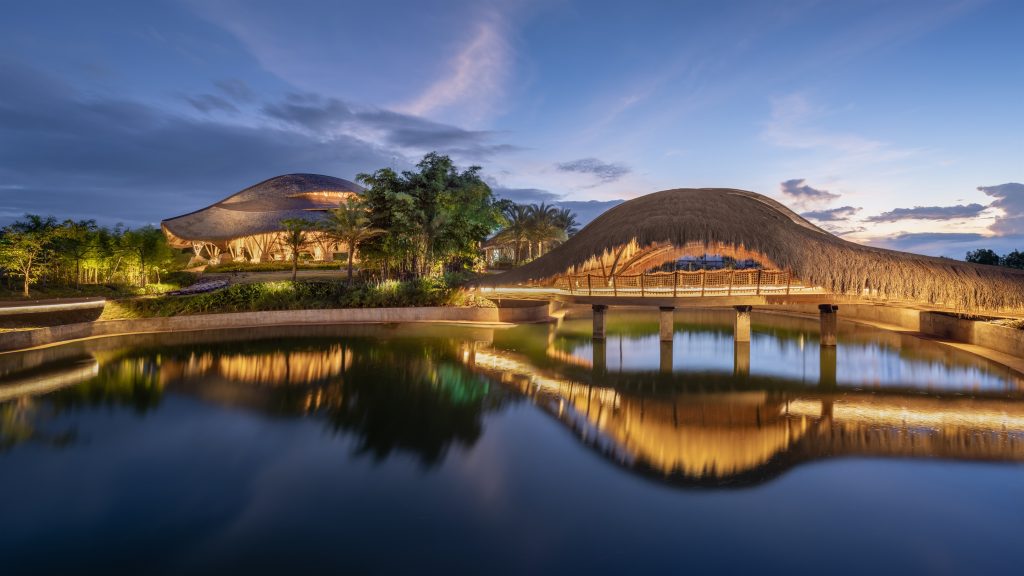
Looking at the broader horizon, Hardy sees an exciting evolution for bamboo in global sustainable architecture. While optimistic about its potential in diverse settings, she offers a crucial insight: “I hope that what happens as we bring bamboo into more dense settings, into urban settings, is that we don’t just treat it like a replacement for steel or a replacement for wood. We keep in mind the really special properties that bamboo has and let that inform the design process.”
The Kaway’an EcoPark’s Pavilion stands proudly as an architectural and engineering marvel. It is an invitation to experience the beauty and resilience of bamboo, and a bold step towards a more sustainable and inspiring future for Filipino architecture.
The post BluPrint Homes Magazine appeared first on IBUKU.
Rise of The Arc 13 Jul 6:29 PM (3 months ago)
Shortlisted for the Aga Khan Award for Architecture 2025

When a building expresses a possibility for the future, it can grow far beyond its purpose and where it first took root.
This is one of those moments.
We’re proud to share that The Arc at Green School has been shortlisted for the Aga Khan Award for Architecture, one of the most meaningful recognitions in our field, honoring architecture that serves people, culture, and place.
Only 19 projects were shortlisted this cycle, from 369 invited to apply over the past three years, with three from Indonesia, making this moment especially meaningful.
From the beginning, The Arc was a question:
“How can this space serve its community and beyond?”
“How can we create something new, while staying rooted in our values?”
That spirit of questioning, experimenting, and honoring a place has shaped
everything we do.
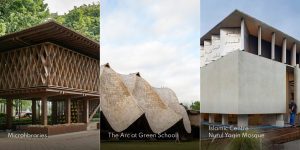
________________________________________________________________________________________________________________________
About The Arc
Completed by Bamboo Pure in 2021 for Green School Bali, The Arc is a world-first in bamboo architecture: a 19-meter span with no steel beams, formed by a series of graceful arches held together by anticlastic gridshells, curved in two directions for strength and lightness.
Behind its elegance lies months of full-scale testing, custom joints, and collaboration across disciplines. Traditional craftsmanship meets structural innovation; proof that bamboo can meet performance demands while staying true to its roots.
“The Arc accommodates both athletic and communal activities, showcasing sustainable design and structural ingenuity.”
— Aga Khan Development Network
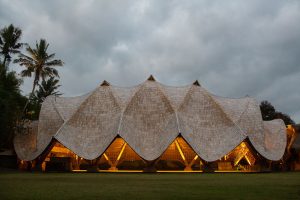
We’re honored by this recognition, and grateful to everyone who helped bring The Arc to life.
To visit The Arc, join a tour of Green School.
We’d love to hear your questions or reflections.
With love,
Elora Hardy ♡
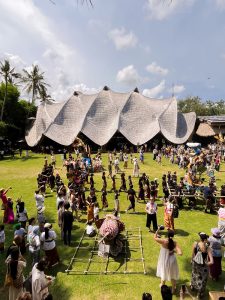
An Extraordinary Collaboration
Construction: Bamboo Pure | Support: John Hardy | Concept: Jörg Stamm | Engineering: Atelier One | Local engineering: Ketut Yasa Bagiarta | Safety Advice: Luis Felipe-Lopez | Lighting Design: Studio Nimmersatt | Testing: James Wolf | Photography: Tommaso Riva
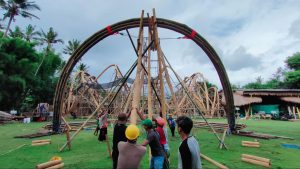
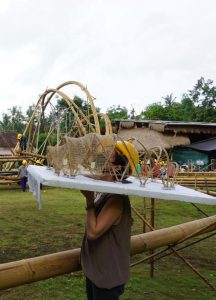
__________________________________________________________________________________________________________________
Further Recognition for The Arc
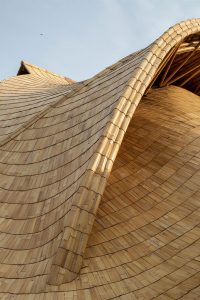
Architizer A+Awards – Architecture + Innovation category, 2025
Supreme Award for Structural Engineering Excellence – The Structural Awards, Institution of Structural Engineers, 2022
Structural Engineering Award – The Structural Awards, Institution of Structural Engineers, 2022
Kyoto Global Design Awards, Laureate, 2021
Global Architecture & Design Awards – Winner, Iconic Building category, 2021
In The Press
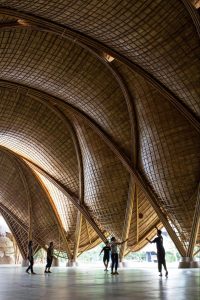
Wallpaper Magazine, 2024﹒Asia Sustainable Travel Briefing, 2024﹒Architectural Digest, 2024﹒Financial Times, 2023﹒Domus, 2023﹒CAN Insider, 2022﹒Lav Vie Magazine, 2022﹒Enki Magazine, 2022﹒Wallpaper Magazine, 2022﹒Magnifissance Magazine, 2022﹒Flatform Magazine, 2022﹒Domus, 2021﹒Green Building and Design Magazine, 2021﹒CFSA Review, 2021﹒Dezeen, 2021﹒Architectural Digest, 2021﹒Arch Daily, 2021
The post Rise of The Arc appeared first on IBUKU.
Shang Cheng Shi Magazine 24 Jun 6:12 PM (4 months ago)
 \
\
















The post Shang Cheng Shi Magazine appeared first on IBUKU.
Culture by Design, IBUKU at ABC TV 16 Jun 5:20 PM (4 months ago)

The final episode introduces audiences to brilliant women designers from across Asia, featuring an architect and graphic designer in Indonesia and ceramicist in India.
The post Culture by Design, IBUKU at ABC TV appeared first on IBUKU.
Architizer A+Awards 2025 2 Jun 5:28 PM (4 months ago)

The post Architizer A+Awards 2025 appeared first on IBUKU.
Step Into IBUKU’s Living Dreamscape 21 May 9:45 PM (5 months ago)

The post Step Into IBUKU’s Living Dreamscape appeared first on IBUKU.
Architects not Architecture 26 Mar 10:42 PM (7 months ago)

complete article & watch AnA Elora Hardy speaker
The post Architects not Architecture appeared first on IBUKU.
IBUKU’s Latest Inspired Creations 20 Mar 5:29 PM (7 months ago)

The post IBUKU’s Latest Inspired Creations appeared first on IBUKU.